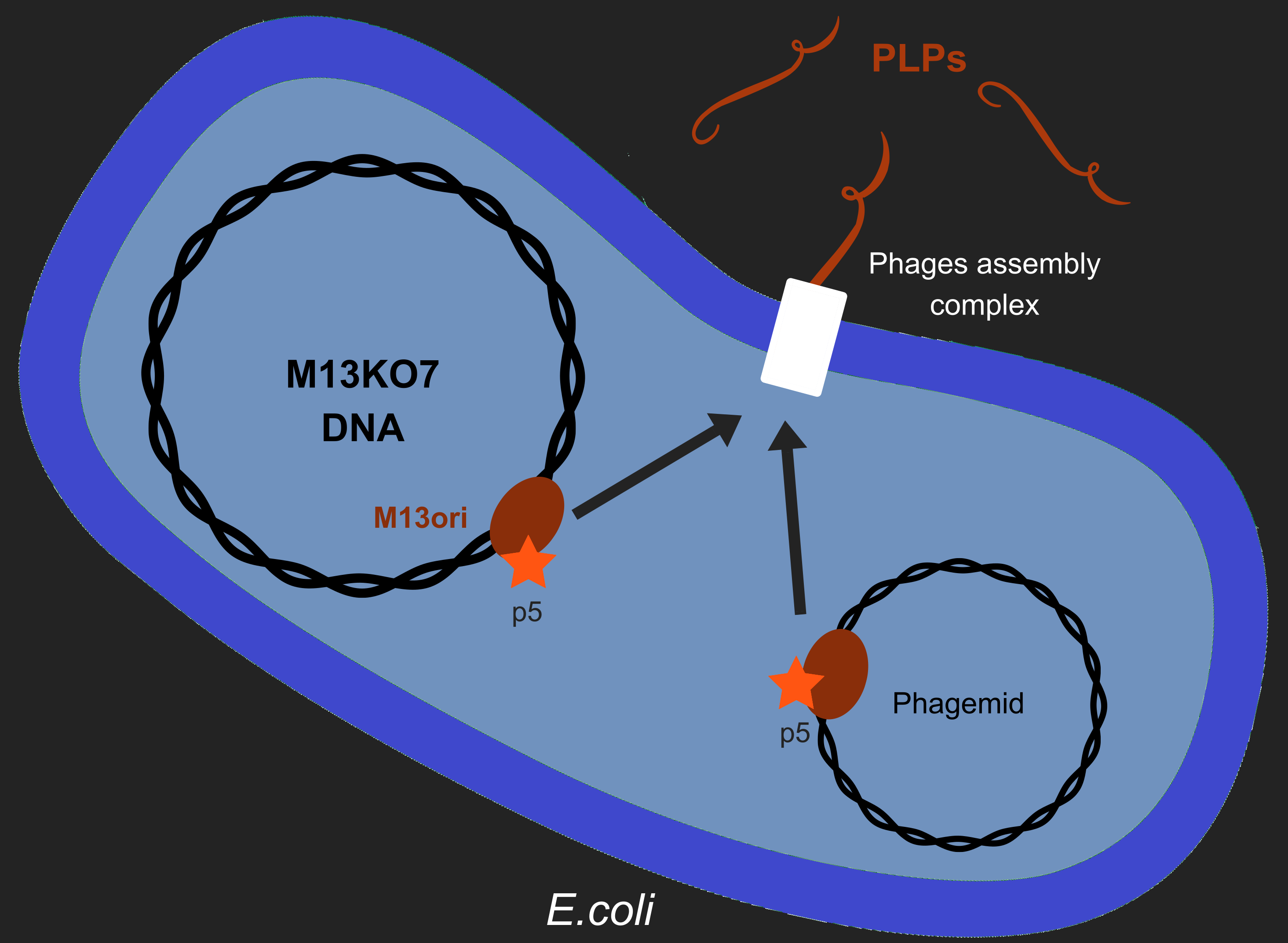Modelling PLP production
The problem
Our objective is to produce phage like particles (PLP), for this, the bacteria must contain both a helper phage (like M13KO7), that codes for the different phage proteins, and also a phagemid, that encodes the toxic gene we want to include in the PLP. During phage production, several key events determine which DNA molecules are packaged into phage or PLP. These involve recognition of the M13 replication origin and packaging signal by several phage proteins.
A major hurdle to marketing KILL XYL is obtaining the necessary authorizations. Our interviews and legislation study both showed that the number of viable phages could be a problem. We therefore decided to measure and model the ratio between viable phage and phage-like particles, and so try to optimize this ratio to facilitate the preparation of pure PLP.
The Model
We based our model on a recently published model of "wild-type" M13 replication [1] [2]. This model was modified to incorporate: the helper-phage replicative origin; the modification of the helper-phage M13 origin and packaging signal; the presence of a phagemid, with its own replicative origin and a native M13 origin and packaging signal. These modifications added xxx species, equations and yyy parameters to the model. The modified model is available here .
We used the initial measurement to constrain parameters of the model, along with published numbers for the number of copies of plasmids with different replicative origins.
Results
We need one or two graphs here showing how the packaging ratio depends on different parameters. A description of these graphs.
- ↑ Smeal et al, Simulation of the M13 life cycle I: Assembly of a genetically-structured deterministic chemical kinetic simulation, Virology, 500, January 2017
- ↑ Smeal et al, Simulation of the M13 life cycle II: Investigation of the control mechanisms of M13 infection and establishment of the carrier state, Virology, 500, January 2017


